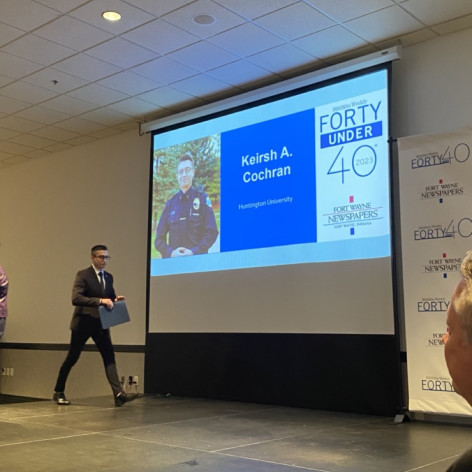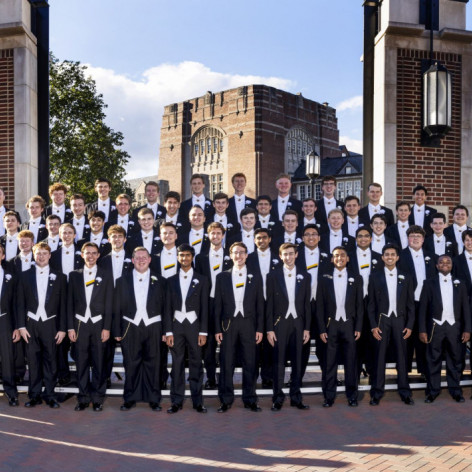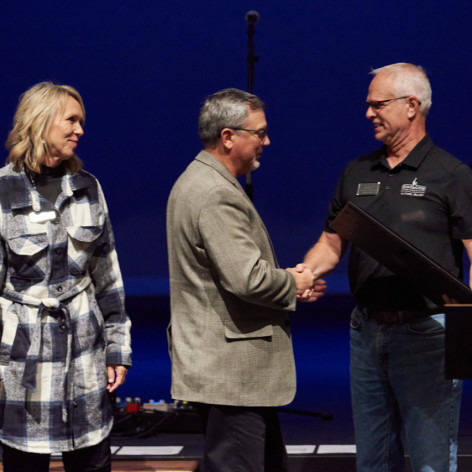Bronze Star Sacrifice
 |
| This photo of Dale Pence from the Huntington University Archives was taken in 1945 by Dr. Elmer Becker, president of Huntington College from 1941-1965. |
Dale Pence, 90, now enjoys a retired lifestyle with Marge, his wife of 68 years. But as newlyweds, the couple endured World War II. Dale dealt with significant battle wounds. After the war, Marge learned how to comfort a husband dealing with the nightly terrors haunting the dreams of her decorated officer.
It's a memory lane that begins at Huntington College, detours through various army bases, twists through war-ravaged European towns and finally returns home.
In the fall of 1942, Dale Pence was in his third year at Huntington College. It was then that Dale and some of his college buddies went to Baer Field, Fort Wayne, to enlist in the service.
In just a year, Dale and his enlisted friends went from the classroom to the barracks at Fort Benjamin Harrison in Indianapolis.
Basic Training and WarDale said he remembers Bob Diffenbaugh, a Huntington College classmate, being with him at Camp Walters, Texas, where Dale completed his basic training.
"Basic training was rather tough because of the extreme heat there in Texas during the summer," said Dale. "They were forced to schedule our long distance marches at night, because so many were falling out with heat exhaustion during the day."
After three months, Dale was assigned to Company I of the 134th Infantry Regiment, a part of the 35th Division. This was the same division President Truman served in during World War I.
On Jan. 20, 1944, Dale and Marge were married.
"For more than 57 years, this beautiful and wonderful lady has been the glue that has held me together. I don't know how I could have endured it without her," writes Dale in war recollections he penned in April of 2001.
In 1944, Dale's division was shipped out for Europe, to join in the action of World War II.
"Three transports carried the main body of the division as part of a large convoy that included many ships," Dale recalls. "I remember watching the small destroyers way out on the outer edges of the convoy. They would appear and disappear as they rode the large waves. This was an awesome experience for all of us as we were filled with wonder about what lay ahead."
Dale said, while on the boat, he attended a chapel service that was packed with servicemen.
"When I was in basic training there would be only a handful of soldiers (in the chapel service), but there is something about going into combat that makes you begin to think about your mortality."
He remembered some wise words, "There are few atheists in the foxholes."
With more than 10 days at sea, the division landed at Liverpool, England. Dale's perspective is now tainted with experience. He said, "Behind us were endless hours of training and experimentation. Ahead of us there was no margin of error. The sum and total of all that had been learned in the training camps must now be given its battle test."
Dale would find him and his division on Omaha Beach just weeks after setting sail, leaving behind the safety of American soil.
"Landing on that beach was an awesome experience. We were viewing a very sacred piece of ground where so many Americans made the supreme sacrifice."
Fifty years later, Dale and Marge visited the same beach. This time the only sounds of war were replaying in Dale's mind.
"As Marge looked up that big hill and remembered the German emplacements at the top, she wondered how anyone made it to the top alive," Dale recounted. "I told her there was only one way there were just so many thousands pouring onto that beach the Germans simply could not kill them all. But if I had been on that beach June 6, my chances of surviving would have been slim."
That reality is sobering. Dale landed on that same beach just a month after soldiers died trying to take that same ground.
But Dale didn't walk the European ground without injury. "On July 17, the Germans were shelling us rather heavily, so we took shelter in these trenches. It was not deep enough for complete protection and a piece of shrapnel cut a rather large gash in my right hip."
Although the injury wasn't life threatening, Dale was flown back to England to recover. According to the 35th Division history, by July 17, the 134th Regiment had lost 102 men with 589 soldiers wounded and 101 missing.
Back to WarThe first week of October 1944 found Dale reunited with his division. The 35th Regiment was advancing toward Germany, and in a few short months, the men were knocking on Germany's door.
"For more than five months we had been fighting on French soil. Every devastated French village, every bridge that had been destroyed, every dead French person or cow or horse had increased the hatred against the Germans," Dale said. "Now the destruction would be on Germany's own land. Now the division could really begin to pay back for the destruction that had been inflicted on the allied countries."
At this time in his career, Dale was assigned to work as an aide to the company's commander.
"I guess I was what you now call a 'gopher.' I just did whatever he asked me to do," said Dale.
Nov. 8, 1944, marked another, more permanent injury for Dale.
He recounts the experience. "I was out in an open area by myself at which time a piece of shrapnel pierced my neck. It went in the front and came out the side. They told me later that it was probably from a tree burst."
Dale explained that when a mortar shell lands in a tree, it explodes and sends fragments spewing out over long distances.
"Because of the injuries I could not talk and had great difficulty in breathing, so all I could think of to do was lie there and beat my rifle on the ground with the hope of attracting someone's attention. While I was doing this another shell landed at my feet."
The shell fragments blew off his right foot.
"I evidently became unconscious after that because the next thing I remember was four men carrying me on a stretcher down off this mountain we were on. I also remember that the Germans began shelling us again on the way down.
"At the bottom of the hill they loaded me onto the hood of a jeep for the trip back to the field hospital. It was a very rough and harrowing ride since I was having difficulty breathing."
For his "heroic service in connection with military operations," Dale was awarded the Bronze Star Medal.
Once Dale arrived at the field hospital, doctors performed a tracheotomy to aid in his breathing.
"With three holes in my neck I was unable to make a sound. The doctors told me when the holes sealed and the tracheotomy was removed I would be able to talk. Of course, I was not sure if they were being honest with me."
Dale's voice eventually returned.
While in England, doctors amputated Dale's foot, just above the ankle. Dale wrote to Marge to let her in on his injuries. He said Marge was "in the dark" about what happened to him.
"I'm sure that those days and weeks must have been much harder for her than for me," said Dale.
Shortly after the New Year, Dale was on his way back to the states. Special casts were used for the amputees to protect the limbs while soldiers maneuvered around the ship. "It was a rather tricky maneuver as we were not yet very adept at that sort of thing."
While on his return trip home, Dale experienced serious pain in the back of his leg. The doctors removed the cast to find a large piece of shrapnel that had worked its way out of Dale's leg.
"They removed it of course and gave it to me," Dale said. "We still have it to this day and have shown it to many of our friends. It's a pretty mean looking piece of metal and gives you some idea of how those shells disintegrate into thousands of pieces when they explode."
On Jan. 18, 1945, Dale landed stateside.
The Return Home"We have a copy of a telegram I sent Marge," said Dale. "It simply said, 'Back at last. Feeling O.K. Hope to see you soon. Love, Dale."
Dale spent the next 10 months in an army hospital in Atlantic City, N.J., where he underwent another amputation.
Doctors determined the extra length of Dale's limb would make it difficult to fit him with an artificial leg. The amputation procedure was at 6 inches below the knee.
"For both amputations, I was given only a spinal block, so I was conscious the whole time. They did put up a sheet in front of me so that I could not see, but I could feel the vibrations of the saw as they cut through the bones," Dale said. "It was not gruesome at all. In fact, it was a very interesting experience."
On Nov. 30, 1945, Dale was discharged from the Army. Although Dale had been fitted with a prosthesis and was released from the hospital, some wounds were still fresh.
"I did suffer from nightmares occasionally for several years," said Dale. "Marge would try to wake me gently and do what she could to quiet me down."
Time was the healer of Dale's wounds.
"Tom Brokaw, in his book, 'The Greatest Generation' mentioned that most combat veterans were reluctant to talk about their experiences for many years," Dale shared. "I guess I would have to include myself in this group. I probably could not have shared this in those early years."
In his closing comments, Dale writes in his recollection recordings, "Tom Brokaw, no doubt, exaggerated a bit when he called us the Greatest Generation. I'm sure any generation of Americans would respond equally as well. Nevertheless, I am proud to have been a small part of what General Eisenhower called the Great Crusade. It was, without a doubt, the greatest world-wide war that the world has ever seen. Being remembered as being a part of that history is important to me."
Dale Pence is a 1946 graduate of Huntington College.


